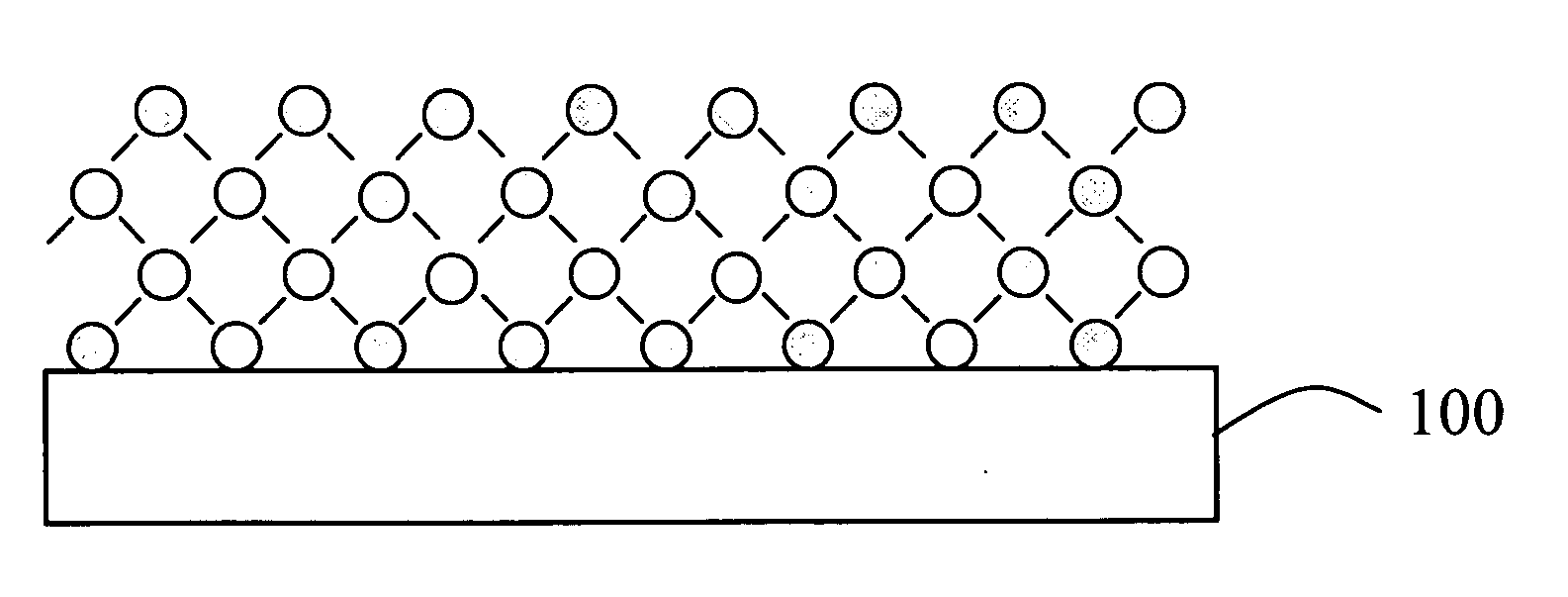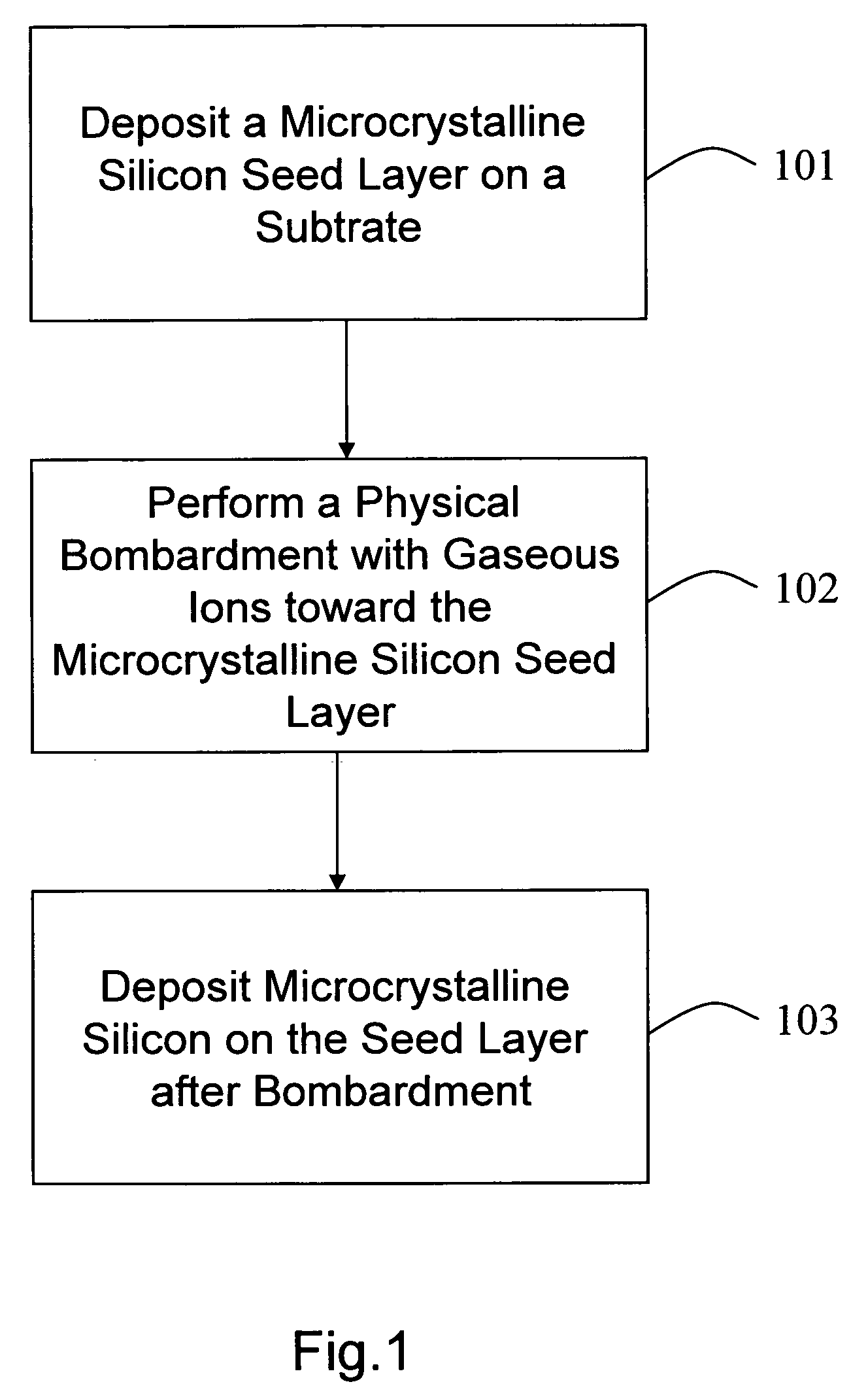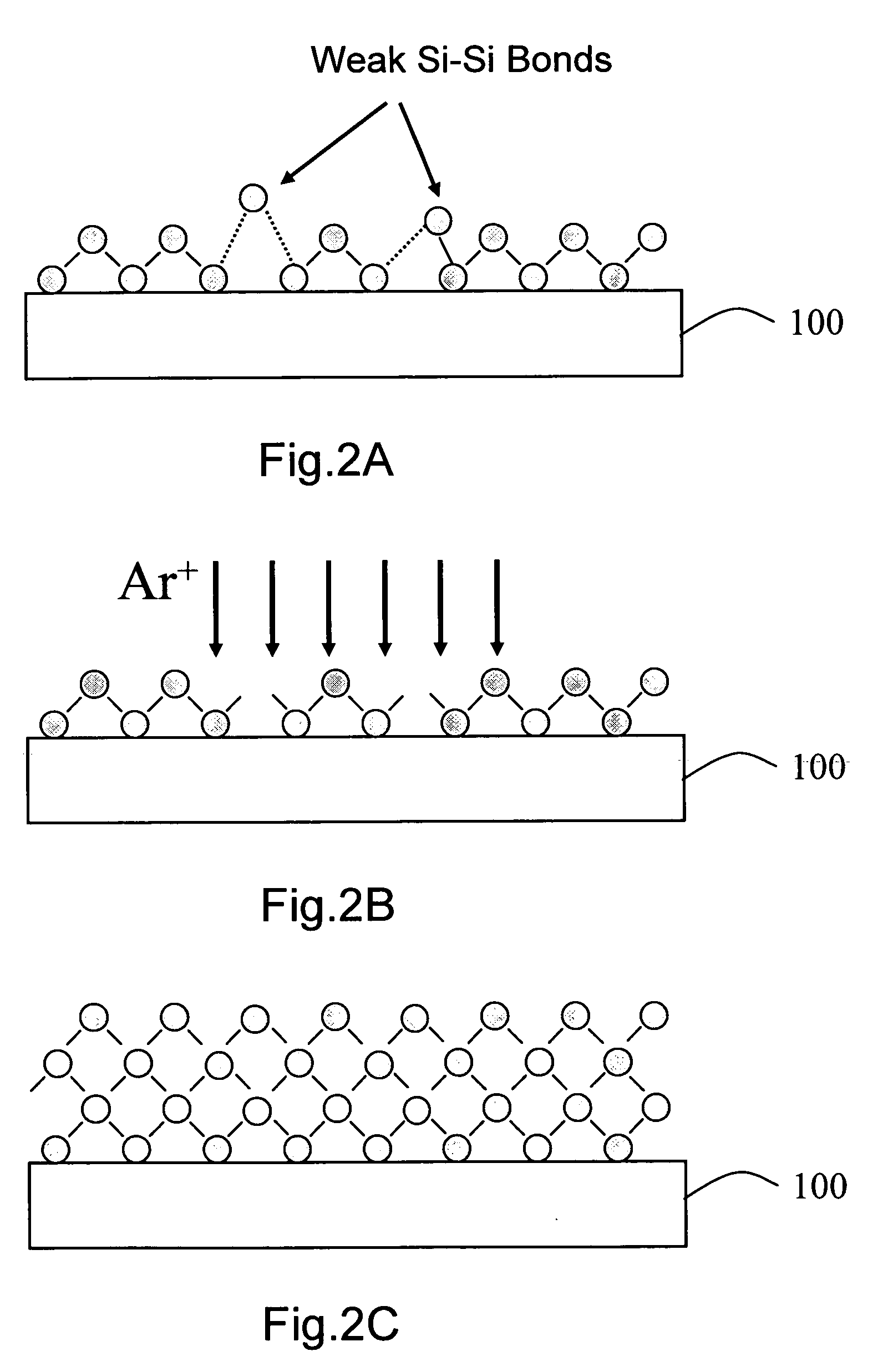Method for forming a microcrystalline silicon film
a microcrystalline silicon and film technology, applied in the direction of coatings, chemical vapor deposition coatings, metallic material coating processes, etc., can solve the problems of high cost and poor productivity of the ela process machine, and the thin film produced is damaged more severely by the plasma, so as to improve the crystallization rate and improve the crystallization
- Summary
- Abstract
- Description
- Claims
- Application Information
AI Technical Summary
Benefits of technology
Problems solved by technology
Method used
Image
Examples
Embodiment Construction
[0015]The present invention provides a method for forming a microcrystalline silicon thin film, employing a three-stage deposition process. At first, a microcrystalline silicon seed layer is deposited. Subsequently, ion bombardment is performed unto the microcrystalline silicon seed layer so that it obtains better crystallinity. Then, microcrystalline silicon is deposited on the microcrystalline silicon seed layer after bombardment, and a microcrystalline silicon thin film of a predetermined thickness is thus formed.
[0016]The method for forming a microcrystalline silicon thin film of the present invention will be described in details with following preferred embodiments and accompanying drawings.
[0017]FIG. 1 is a process flow according to one preferred embodiment of the present invention. FIG. 2A through FIG. 2C is schematic views of growing the microcrystalline silicon thin film, which respectively correspond to various steps of the process flow of FIG. 1. Reference is now made to ...
PUM
| Property | Measurement | Unit |
|---|---|---|
| thickness | aaaaa | aaaaa |
| thick | aaaaa | aaaaa |
| thickness | aaaaa | aaaaa |
Abstract
Description
Claims
Application Information
 Login to View More
Login to View More - R&D
- Intellectual Property
- Life Sciences
- Materials
- Tech Scout
- Unparalleled Data Quality
- Higher Quality Content
- 60% Fewer Hallucinations
Browse by: Latest US Patents, China's latest patents, Technical Efficacy Thesaurus, Application Domain, Technology Topic, Popular Technical Reports.
© 2025 PatSnap. All rights reserved.Legal|Privacy policy|Modern Slavery Act Transparency Statement|Sitemap|About US| Contact US: help@patsnap.com



